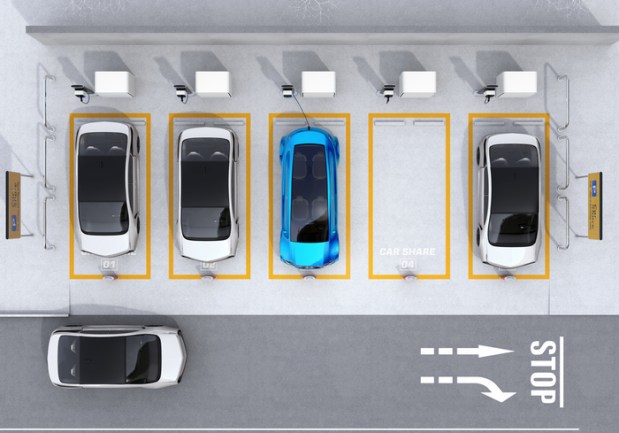Rideshare Rental Startup Expands In New York And Wisconsin

Many, but not all, cars meet Uber and Lyft’s standards. With Uber, for example, cars must have four doors and be newer than 15 years old to operate on their platform. Lyft has similar requirements, too, although cars must be no older than 12 years on its platform, unless a driver operates in certain coverage areas.
But some would-be rideshare drivers, who might be driving a two-door coupe or an older used car, might not meet those requirements. Some might not even own a car at all. Renting a car is not usually an option, unless it comes from an approved lender.
Enter California-based startup HyreCar, which connects rideshare drivers and car owners through an online marketplace — a car rental matchmaking service of sorts — and works with Uber and Lyft, according to its website.
Unlike services like Turo, which is focused on the broader rental market, HyreCar provides features like insurance targeted toward rideshare drivers.
The company, which is in 29 states, is growing — it added New York City and Madison, Wisconsin, to its roster of cities in 2017. And, companies that provide rideshare rentals like GM’s Maven Gig have been expanding to new cities — such as Los Angeles — as well. In short, some people need cars to drive for ridesharing platforms, and some companies are happy to supply them with vehicles.
Marketplace Over Showrooms
Rideshare rentals can be a challenging business, but HyreCar has a distinct advantage: It doesn’t own its own fleet of vehicles, compared to Uber’s Xchange unit.
Without having to maintain a fleet, HyreCar doesn’t have to spend money to grow an inventory of vehicles — Xchange purchased approximately 40,000 cars, for example. Also, unlike Xchange, HyreCar doesn’t have to come up with a place to store its inventory: Xchange kept the cars in 14 showrooms across the country, according to TheDrive.
These expenses didn’t bode well for Xchange. After running the numbers, the company realized it was losing a huge amount of money per car in its rental program — nearly $9,000 each. So, since the summer of 2017, Uber searched for a buyer.
Finally, it seemed to find one at the end of 2017: Uber reportedly reached a deal to sell the unit to Fair.com, and The Wall Street Journal said the sale of the unit marked the end of an attempt by Uber to get new drivers who don’t have access to vehicles.
HyreCar, however, is not alone in its business of renting to rideshare drivers. Hertz, for example, offers weekly rentals for Uber drivers, and Lyft offers its “express drive” rentals, too.
But HyreCar does offer some unique features in an attempt to solve some regulatory problems for drivers. For example, those who drive for services like as Uber and Lyft in the Big Apple must have Taxi and Limousine Commission (TLC) license plates, among other requirements. So, the company has offered TLC-plated cars for its fleet since November 2017.
Beyond TLC-plated cars, the company also provides renters with the ability to run luxury cars so they can drive for Uber Black or Lyft Premier — as well as niche players like RideAlfred, which provides professional black car drivers in Wisconsin.
RideAlfred’s CEO Josh Massey said the service increases its supply of drivers by providing on-demand rentals to drivers. “By working with HyreCar, we can bring more drivers onto our service because those drivers will now have access to … vehicles with as little as a few hours notice,” he said in an announcement.
Regardless of the platform, HyreCar allows renters to make payments on their mobile devices, if they so choose, by using Stripe.
Future
HyreCar — and services like it — may some day face the reality that Uber, Lyft and other rideshares might not require human drivers in the future. Already, Uber is investing in robotics as it prepares for a potentially driverless future, and transportation startups such as Voyage are entirely built on the premise of self-driving cars.
Still, HyreCar representatives said that self-driving cars are on the radar, but the way they see it, cars on the market are currently not set up for driverless features. They have a few strategic items on their roadmap that will allow them to pivot their model if need be.
But until self-driving cars come to the consumer market, it seems that as long as drivers want to rent cars to earn income through Uber, Lyft or other rideshares, HyreCar — and similar services — may be there to serve them.
